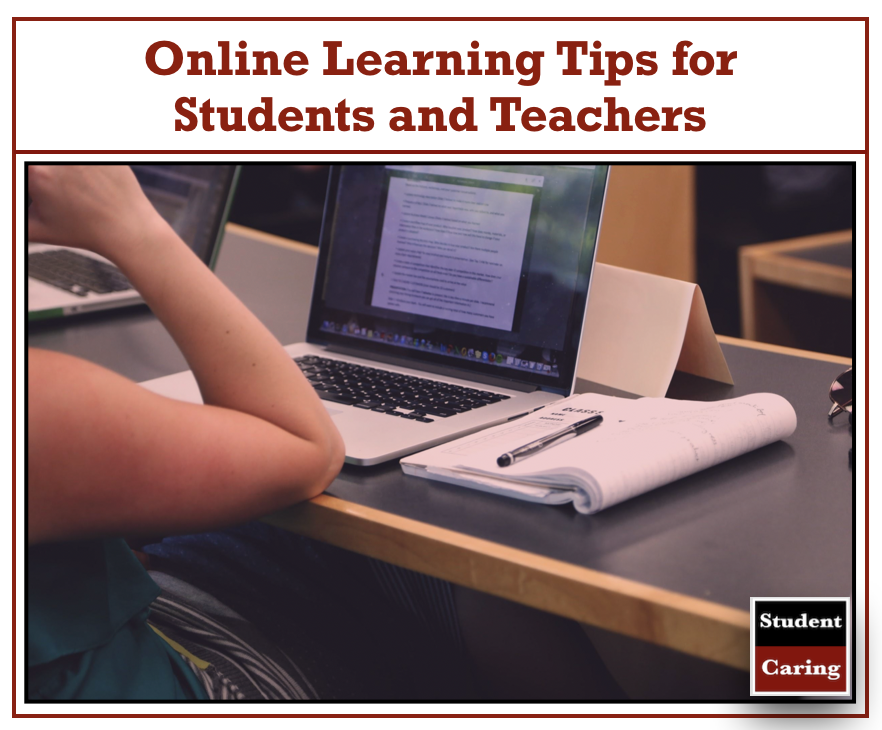
Image Link: [https://www.pexels.com/photo/notes-macbook-study-conference-7102/]
Learning and educating now are much different than they were 30 years ago before technological advances began dominating our lives. Back then, research was conducted in libraries using books and periodicals. Now, everything you could ever want to know is stored online offering a treasure trove of opportunities and resources for both students and teachers.
For Teachers
As an instructor, you want to connect with your students and pass on to them a love of learning and the key to open doors to further investigation and knowledge. A blended classroom of both traditional and online methods helps teachers to reach students even better across societal and geographic lines. Everyone is the same online; there are no boundaries separating students from all walks of life. Plus, younger generations grew up in a world steeped in technology, and they expect online learning alternatives where communication has never been more accessible.
The benefits to you as an instructor are numerous. Blended alternatives allow you to reach some of your students in a classroom environment using traditional tools but also take some of the pressure off by using automated tools for testing and grading. The time you save can be put to good use focusing on those students who need extra help in specific areas. Identifying those students and struggle areas is quicker and easier with the online resources and apps that track progress and identify less than optimal results.
According to the U.S. Department of Education, students in middle school and high school that participated in blended programs had much higher academic scores than those who did not. Technology offers students the convenience of studying at their own pace, on their own time and helps them become more engaged and interested in the curriculum.
As a teacher, there are a few ways you can use technology to improve your educational program.
Learn the technology: You don’t have to become an IT expert, but you should be very familiar with the online tools and resources and how to use them. If your students are meeting online, find out where and how, and use that as part of your classroom instruction. Ask students for help and suggestions on places to set up classroom meetings. Being a part of the process will engage them even more.
Extend your classroom through social media: Set up Facebook or Instagram group pages for your classes and encourage students to engage in the discussion. Meet them on their own turf, and you might be surprised that kids who are quiet in the classroom have much more to say when they are in the comfort of an online discussion group.
Use multiple channels: When posting assignments, repeat them in all the online meeting places so no one can say later they “didn’t know about the assignment.” Reiterating your instruction across different media helps kids who learn differently all get the same message.
Use text messaging to connect with students: Consider opening the door to texting with students. It’s a quick and easy way to get answers to questions or communication updates to curriculum outside of class hours. Students already engage in heavy texting and will appreciate the format as a way to reach you.
Keep traditional methods in place: Along with your online classroom, be sure to keep many of your regular teaching methods in place. Remember, not all students learn the same, and some will respond best to lectures, paper assignments and textbooks rather than online discussions and app-based testing. Find the perfect balance that works best for you and your students; this may be an evolving piece that changes each semester.
Ask for feedback: Ask students for input on online methodologies and ease of use. If they have suggestions to improve your program, implement them. Students learn better and appreciate education when they are involved in the process.
For Students
Modern technology offers today’s students a lot of conveniences but also more responsibility. If your school or college classes blend traditional teaching with online courses, you need to be flexible and knowledgeable about how to get the most from your education while also enjoying the best experience.
Online courses offer great freedom, but you have to be accountable and do the work. With flexibility comes a price. You will need to figure out what works best for you. Pick a time and a quiet place to work online where you won’t be disturbed. Sometimes routines and using the same time slot helps keep you focused and on schedule. While working, turn off social media or other distractions.
Email, texting, and social media are great tools to interact with your classmates but also establish a relationship with your instructor. It might be scary to ask questions in class but emailing your teacher or a classmate who you don’t know well might be a lot easier. If used correctly, these forms of online communication can help you get the information you need more comfortably and help you excel in areas where previously you struggled.
In a blended classroom, you may have to read chapters from a book, go online and research, and then take a quiz on an app. With so many different aspects to juggle, staying organized is the key to keeping it all together. You can use alarms or reminders on your cell phone to alert you when to do things. You can also fill up your online calendar, so you don’t forget even one assignment.
The most important thing when working in a blended classroom environment is to stay on top of things. Do not fall behind and ask plenty of questions to get help when you need it. The teacher is not your only resource. Every other student in the class is available for you to text, email or open up to in an online discussion. They may add insight you would never have gained elsewhere. Your success in online education is all about you and how you approach it.

0 Comments